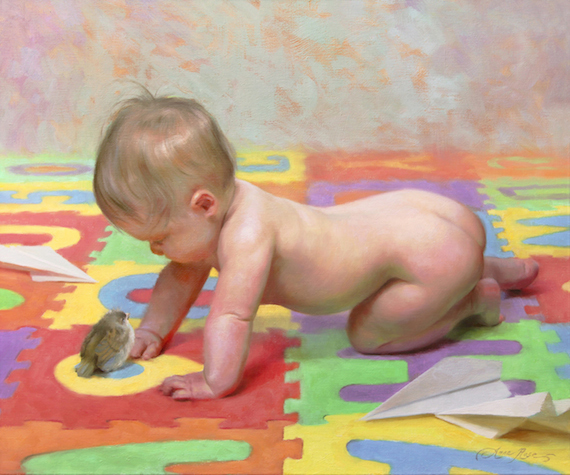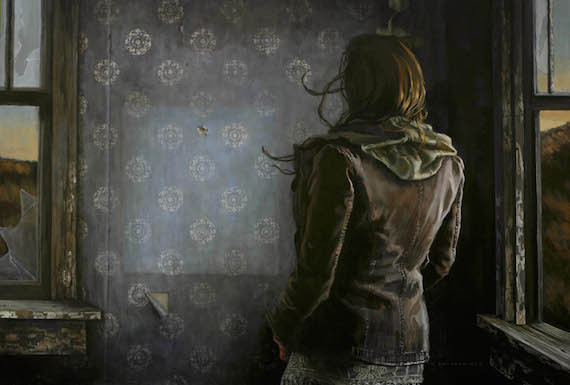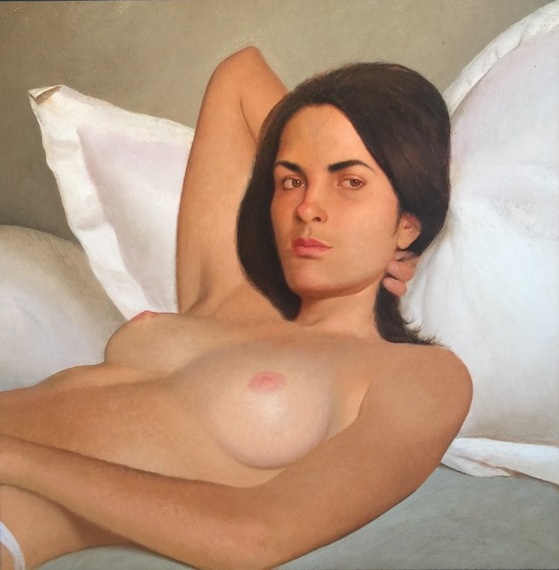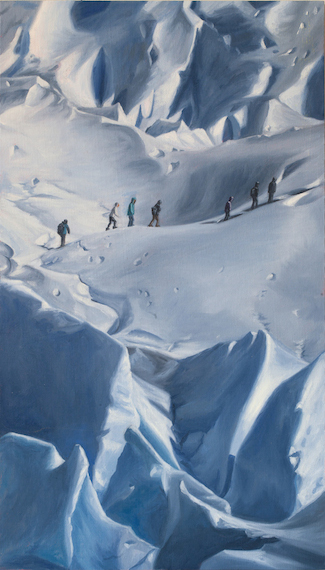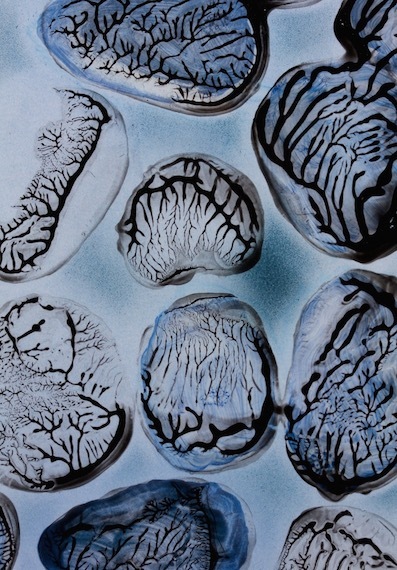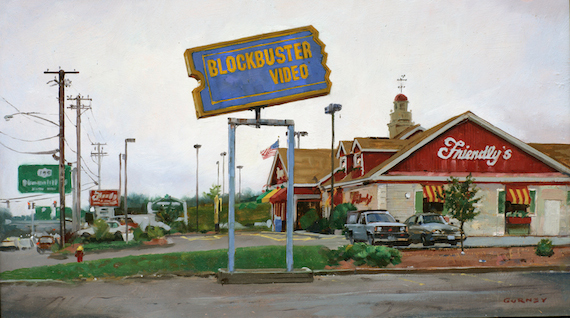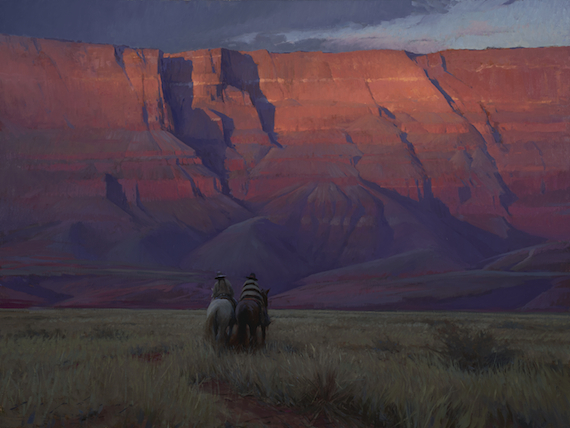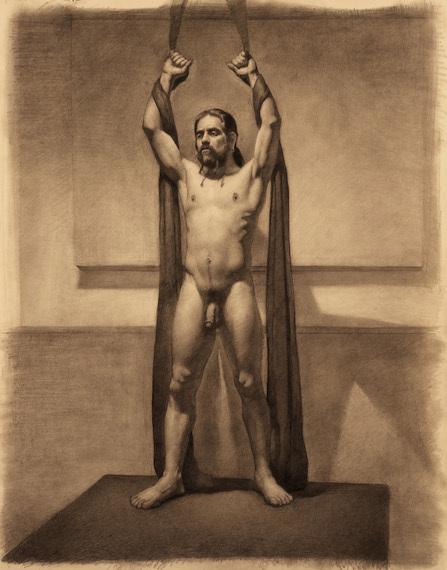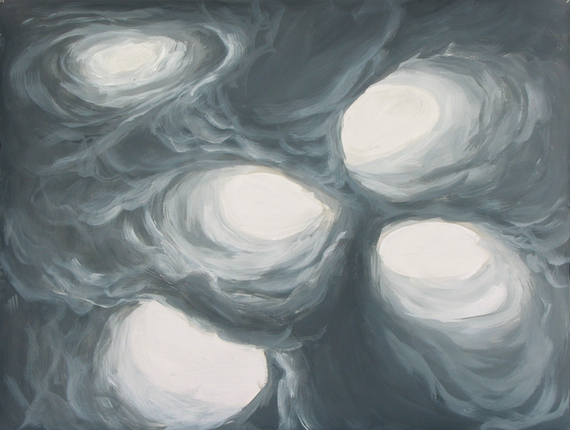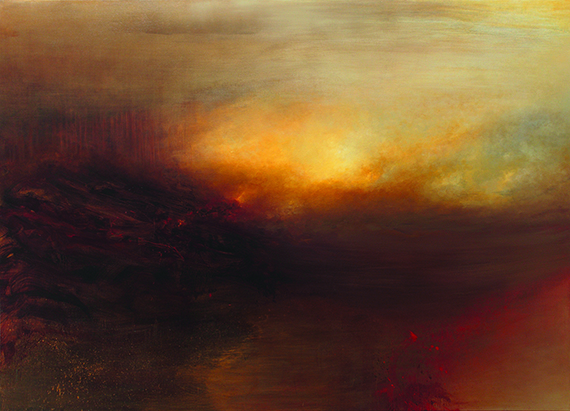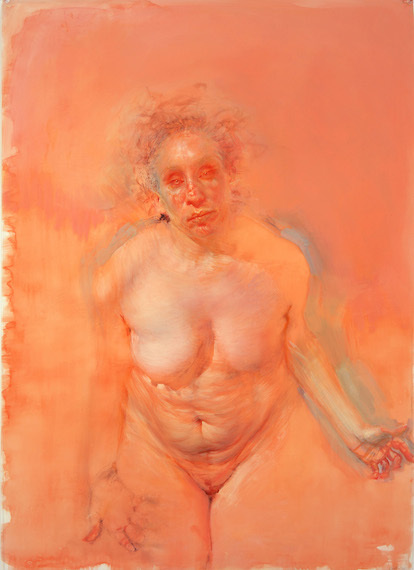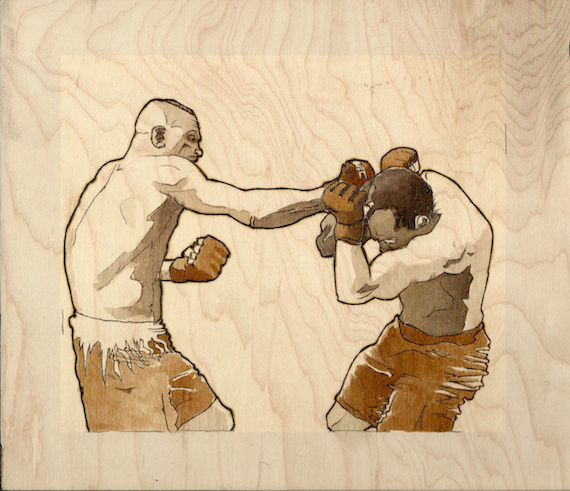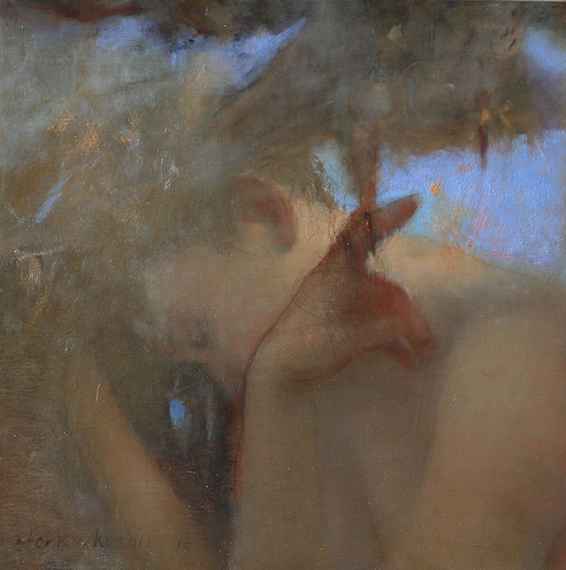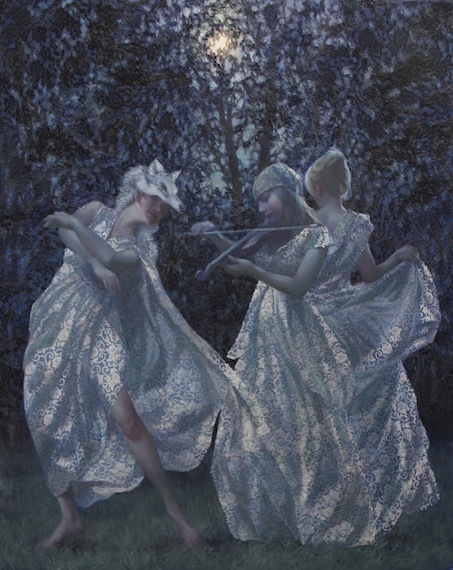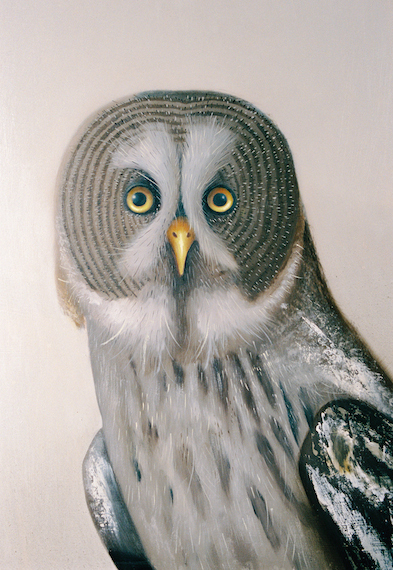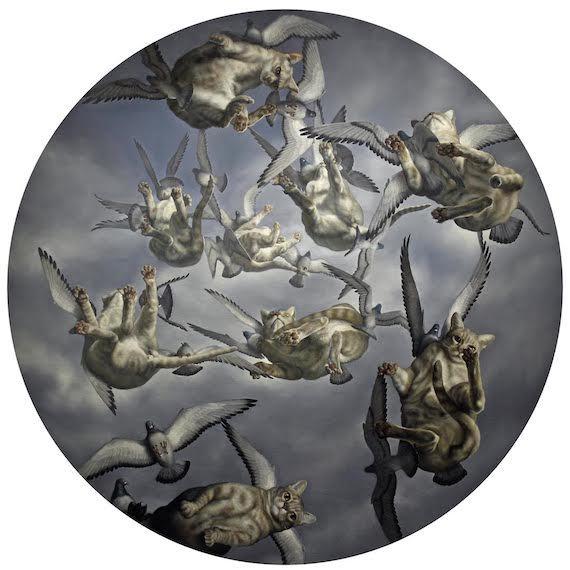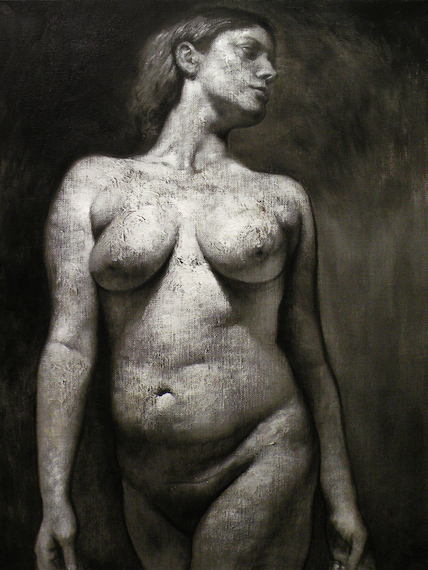NOTICE: This blog post includes images of nudity in painting and drawing.
--
What we have here are 23 pieces of art, with my notes on each. These works are by 23 of 50 artists -- representing 23 of 100 artworks -- included in issue #68 of Poets/Artists magazine, which I had the honor of curating under the guidance of publisher Didi Menendez.
The magazine does not include this commentary. I am very proud of the magazine, but in print, I like to look at art without all the chit-chat. So the magazine is low on text. However, there is a fantastic Instagram profile called @paint_anyway, which is often run by guest curators. I was invited to showcase a selection of work from my issue of Poets/Artists at @paint_anway. I thought my contributions there could use a little written introduction. So when I made the painful selection of a fraction of the artwork, I chose particularly the pieces I thought I could write something interesting about. And I wrote a little paragraph describing what I saw in each one, and how that made me feel.
I've compiled those artworks and that text here. But while I have your attention, let me recommend Poets/Artists -- you can preview or download my entire issue here -- and also @paint_anway if you're on Instagram, it's a great resource to have in your feed.
I love the work included below, and I am happy to have the opportunity to share it, and my thoughts about it, with you. I hope you had a wonderful Thanksgiving, and that your upcoming holiday of choice goes very well.
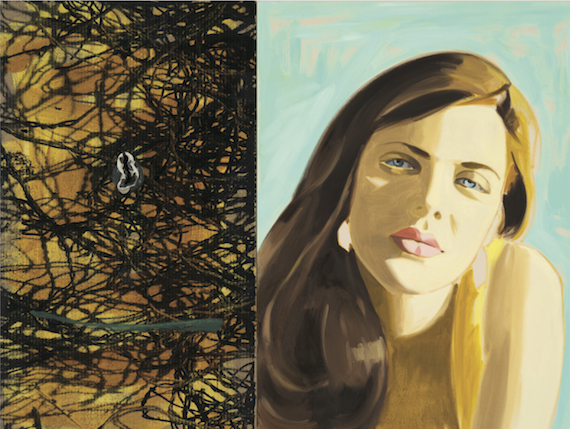
David Salle, Tangled Up, 2013, oil on canvas, acrylic and silkscreen ink on board with hand-thrown ceramic object, 44" x 59"
Art © David Salle/Licensed by Vaga, NY, NY
reproduction without permission is prohibited
This is the cover image of the issue, a painting by David Salle; the woman is Syrie Moskowitz. Salle is legendary for his contribution to the concept and practice of postmodern art. At an explicit level, his work is analytic, in the sense that its form is determined by the ideas it seeks to elucidate and test. But viewed from what I imagine as its inside, as the process of its generation, I believe that it is also classically intuitive, that it contains a strong element of Salle messing around until what he sees in front of him just works.
Figurative painter Anna Rose Bain has been painting her daughter since she was born. There is a strong element of sentimentality in the more finished pieces, something that usually doesn't work for me. But the vital affection of Bain for her daughter gives this sentimentality strength and integrity, and makes the work, in my opinion, effortlessly moving.
I saw this haunting painting of Mary Chiaramonte's when it was first painted, and made a note to publish it as soon as I could. There is something so gaspingly harsh to the broken glass, the cold wind, the angled evening light, and that missing picture on the rotting wall. I love this painting.
This painting by Bo Bartlett exemplifies some of my favorite qualities in his work. His slightly stylized figures forcefully convey his love of people - often of women - both in general and as individuals. His serene compositions give the viewer breathing room to study the work. But the sensuality of his art is not a question of flesh alone, or cloth alone, or any material thing; it is also the sensuality of light and of fresh air. Daylight fills most of his paintings, and this is what makes them so vivid and special for me.

Elizabeth D'Angelo, She Thought She Was Small and Trapped, But She Was Not, 2014, mixed media on clayboard, 8" x 8"
This hallucinatory piece by Elizabeth D'Angelo is appealing on its own, in its crazy color, intense line, good cheer, and symmetry. But knowing a bit about the artist helps to explain and deepen what she does; she suffers from an illness which keeps her confined to her bedroom much of the time, often in pain. She fills the micro-worlds of her art with life and detail, creating a medium of spiritual liberation from the prison of her body. In this sense she is like Kahlo, and the two share some traits, but I think of D'Angelo as her own unique and captivating artist.
Look at the broad sweep of icy nature! The tiny scale of the human figures trudging across the harsh wilderness! In this painting by Carrie-Ann Bracco we confront the heroic scale of the world we live in, and our own humbling role in it; humbling, but matching it in some sense, when we are at our best. After all, these figures stubbornly make their way across the fearsome land. Bracco's work conveys the beauty of the inhuman Earth, and a romantic and hopeful vision of our place in it.
This piece by Joaquin Carter was made using the process of decalcomania - pressing a viscous fluid between two flat surfaces, and then peeling one of those surfaces away. It is a wonderful technique in the hands of an artist sensitive to its strange and funny qualities, like Carter. He produces a beautiful and oddly amusing distribution of shapes which could almost be organic.
Artist and illustrator James Gurney may be best known for his Dinotopia series, but he has produced an enormous body of paintings, from the casual to the more worked-up, observing everyday moments in the nondescript places-in-between of the United States. His eye seeks out the landscapes and objects we habitually forget, and he fixes them in his memory and ours, finding the beautiful and worthwhile in their uncared-for blankness. In some ways, this is similar to the incredible poetry of Lee Child's descriptions of exurbia in his series of Jack Reacher thrillers. Both Gurney and Child work to redeem swaths of America which are ordinarily scorned or completely overlooked.
Jeremy Lipking is one of the most accomplished colorists making paintings in the United States today. His grasp not only of the subtleties of individual colors, but of the impact of neighboring colors on one another and on an overall composition, are on par with the masters of the 19th century, as far as I'm concerned. Here he turns his eye on a heroic landscape of the West, orchestrating every element around two balanced priorities: the last of the sunlight on the cliffs, and the foreground figures inhabiting an already dim dusk landscape. To me, this painting has a breathtaking sense of scale, of the quality of air and wind, and of the specific experience of a single moment, even if that moment is part of cyclic time, coming by in variations again and again.
What a comical and disturbing painting this is! Katie O'Hagan paints here the classic anxiety dream of being caught naked in public. She half-covers her self-portrait with the dirty laundry of the title, but as the title suggests, even this covering leaves her uncovered - dirty laundry is what you call bad secrets. O'Hagan's fantasy here seems to be self-revelation, letting go of hiding what one is ashamed of. And yet she finds herself in a gloomy, abandoned town. It is possible that her alter ago spent time and energy on presenting a clean façade, but in the end nobody would have cared if she hadn't.
Many of the works I chose for this group involve treatments of personal. Isaac Pelepko's drawing strikes me as a powerful and weird treatment of the theme. A man stands naked, arms up, so that although he is clearly very strong, his strength cannot help him: his entire body is exposed to attack. His arms are looped into hanging cloths, and the setting and pose are bilaterally symmetrical, lending a ritualistic tinge to the image, as if the man presented himself as a sacrifice. He is spotlit, and there is a look of intense concentration on his face. There is a powerful erotic element to this, and an aspect of danger, and above all a unique menacing weirdness which for me runs through Pelepko's body of work.
How I love this painting! This is an imaginary cloudscape, one of a series Pearlman painted. For me, there is a unique terror to unnatural clouds, and even to the more peculiar real ones, like the lenticular mammatus first well-documented over Joplin, Missouri in 2005. I believe that the end of the world will begin with monstrous clouds. Pearlman captures that fear here: clouds that, because they are able to form, indicate that what we thought we knew about the world was wrong. If there should prove radically more to the possible universe than we knew, it will amount to the end of our little familiar world. We will be thrust forcibly into the unknown, able to rely on nothing, at the mercy of alien forces. Pearlman's work is a premonition of this awful shattering.
While we are on the subject of impossible landscapes, let's enjoy Samantha Keely Smith's eerie Tocsin. As opposed to Pearlman's horrifying future, Smith's work reads to me like an image of the primordial past, a memory of the Hadean Eon, the volcanic age with which Earth began. It is an image of inchoate elements at war with one another, of order just barely emerging from a ceaseless boiling of the unsorted constituents of the youthful Earth. It is an image that is unspeakably ancient, in the same unspeakable manner as Lovecraft's depiction of age on age before the rise of Man. In this savage landscape, light emerges, at once threatening and consoling, because these opposites have not yet migrated to opposed poles of experience. In the roiling unity, they are still the same.
Anne Harris has produced a number of self-portraits using similar aesthetic parameters: a frontal nude, a restricted palette, a use of lost edges so extreme as to disperse large portions of the body. Above all, she has been scathing with her appearance, accentuating the sagging of belly and breast, the thinning of hair, the softening of arms and thighs, the reddening of nose and fingers and eyelids. There is such an intensity to the condemnation of her gaze that it is difficult to look at her work, and also impossible to look away. I have no conclusion to draw about broader moral or sexual/political implications of what she does. To me, she is most inspiring as an individual with a rigorous and brilliantly executed vision, who either has no sense of fear or discomfort, or does not give it an inch. In this, she successfully carries out Rodin's instruction to go on staring until you see the beauty.
This is an installment in a long-term project of Chris Rini's, of burning images of MMA fighting onto wood. The idiom so pleasingly matches the content! Here are simple images of men fighting, traced out with fire on wood, with no fuss or detail to spare. The draughtsmanship is simple and sure, the number of lines and colors minimal, the setting elided entirely. They are exactly right. In capturing and paying tribute to the spirit of hand-to-hand combat sport, I feel like they become beautiful secular ikons.
Stanka Kordic has wrestled for many years with the practice of letting go. I have followed her evolving figurative work as she has experimented with different means of interfering with the integrity of the rendering. While there has been hesitation in her past work, the sanctity of the image overriding her impulse to obscure it, I feel she has entered with confidence into the "zone" in this new work. Edges fade, parts and details dissolve, and we are left only with traces of her natively elegant line, which yields at last to what she sought: a composition defined by mood and color.
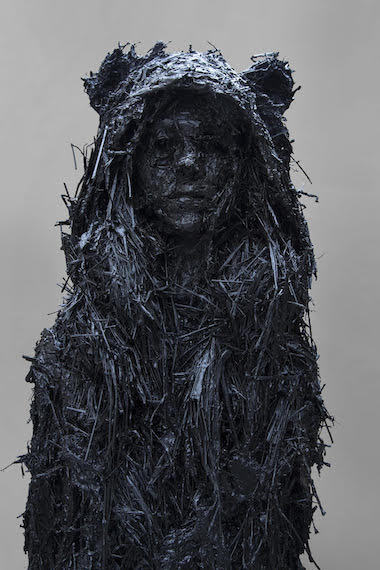
Nicola Hicks, Dressed for the Woods II (detail), 2013, plaster, 78 ¾" x 71" x 71", edition of 3 (AFG 51758)
Hicks sculpts in materials like straw and mud, before casting her work in more durable substances. She combines the vivid chaos of her originating medium with the spare classical forms of her figures. This lends them a baptismal feeling, a feeling of holy submersion in water and in soil. Here we see a figure as if from a children's book, a boy dressed as a bear. Hicks renders him with the solemnity with which he understands himself, dignifying his project so that the viewer experiences the hidden magic of the wild which the boy recognizes and channels.
A young woman sits hunched in a chair, knees covered by a blanket, gaze turned aside, lost in thought. Behind her an old television, a dingy wall, a mantle littered with domestic debris. At her feet, worn tiles or linoleum. Farsam Sangini, located in Tehran, strikes me as displaying an imaginative and deep empathy with the everyday, with the quotidian concerns of his sitters and with the details of their lives. This species of unromantic but sympathetic realism was one of the great projects of nineteenth century painting and writing, and it is such a relief to encounter it again, to see an artist dedicated to comprehending the meanings of the lives of those around him, and using art not to change those lives, but to invest them with a dignity which can only be obtained through the loving and clear-eyed gaze.
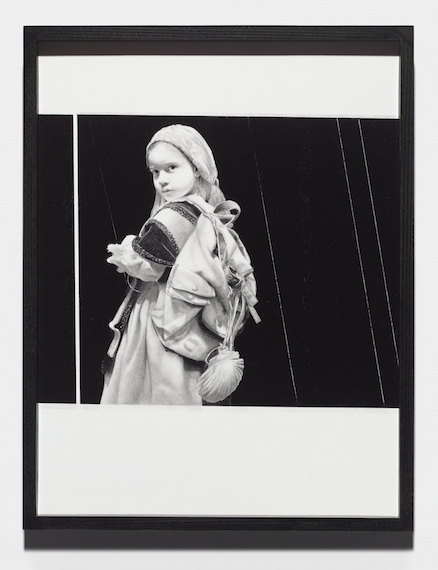
Andrew Sendor, Three replicas of stills from the documentary "Interview Sessions with Plumita Lunes Nuñes: On Adversity, Resilience and Forgiveness", 2015, graphite on paper, 17" x 13"
Courtesy of the artist and Sperone Westwater, New York
This drawing of a little girl is an installment in the complex, multi-stranded progression of a pocket universe which exists in the mind of Andrew Sendor. Populated by people and places almost like our own, but at times disturbingly different, Sendor transmits episodes from the story in his mind through his dazzlingly ambitious drawings, paintings, and films. The little girl, Plumita Lunes Nuñes, has set out on a pilgrimage across Europe, following an ancient Christian trail, in the hopes of discovering her lost parents at the end of the path. She is the most heartbreaking member of Sendor's surreal - parareal? - cast. For more of my thoughts on his current body of work, see my Huffington Post piece here.
Adrienne Stein is a young artist who makes tremendous use of a relatively rare quality in a straight-realist painter: an appetite for depicting endless fine detail. This painting conveys what her appetite makes possible - a sense of dreamy depths, of figures submerged halfway into an active night which speaks in the whisper of rustling leaves and shimmering moonlight. There is a sense of magic to Stein's work - it is a very classical European magic, that of the orderly forest and enchanted garden, and of their opposites, the disordered forest and the terrifying jungle. This magic is natural to the mind, but comes painfully to the hand, and we therefore see far too little of it in art.
Animals strike us as funny and strange, and Herb Smith captures both the animal and our impression of it in this awesome painting. On a superficial glance the piece appears detailed and naturalistic, but when you look more closely, you can see that it is not that at all: the wings are troweled on, the feathers of the breast are just a pattern of paint, the fine feathers of the head are not so much observed as dotted in by algorithm. This is a network of templates jammed together to make a bird. There is something disturbing and comical about that, and Smith crowns the effect with those eyes, almost natural and yet, again, not quite: halfway to the beady plastic stare of a malevolent doll. This painting is a masterpiece of oddity, its madcap elements somehow ending up exactly with one of our main perceptions of the animal kingdom.
Following up on the theme of "aren't animals funny?" we have Zane York's bizarre and hilarious vision of pigeons raising cats bodily into heaven. This is done with a completely straight face, the observational technique rich and detailed, the composition a deadpan recapitulation of any number of Tiepolo-era paintings, except, of course, recast with pigeons and cats. Comedies regularly get slighted at the Oscars, because people don't take comedy as seriously as tragedy. But comedy is a serious business, and it takes a master like York to play it well: not only to pull off all the elements of the genre, but to use it for its strength - to help us stand aside from our somber self-flattery, and see that alongside the serious, there is a fatal strain of the absurd with which we must forever contend as well.
This last painting is mine - one in a series using heavy paint on coarse linen which I've been working on for my next solo show, at Dacia Gallery in spring of 2016. I've moved away from my habitually smooth canvas and thin paint in this series, in order not only to represent, but to embody, fleshliness. When I first posted this painting on Facebook, many people assumed I was making a judgment about Lot's wife, her action, and her fate. That category of judgment, however, is apart from my purpose as an artist - if you are one of the people who was wondering, I have nothing to assert either way. This painting, like much of my work, was inspired by its model, in this case Monty Montan. She is mighty and confident, and I wanted to capture her heroic scale, both as a body and a personality, in the piece.
Let me recommend again @paint_anyway, if you are on Instagram, and my issue of Poets/Artists - there is much excellent work in it which is not included here.


